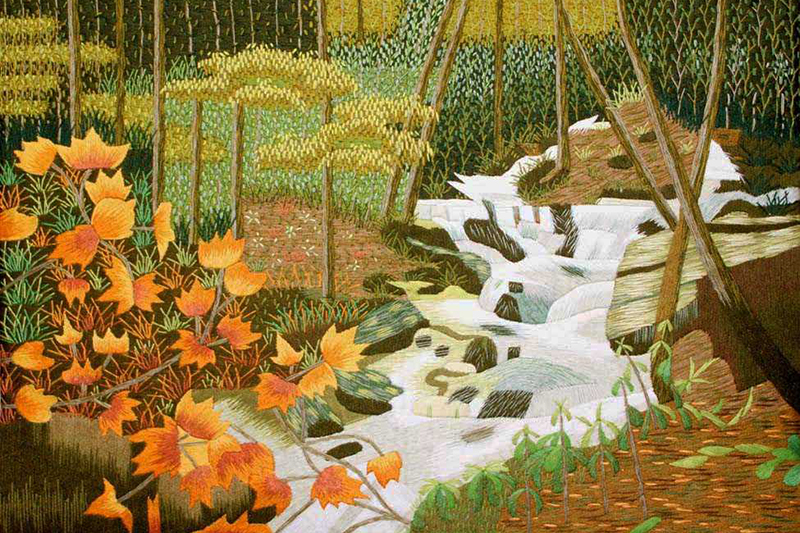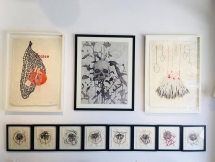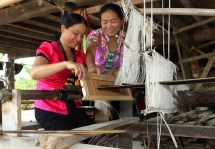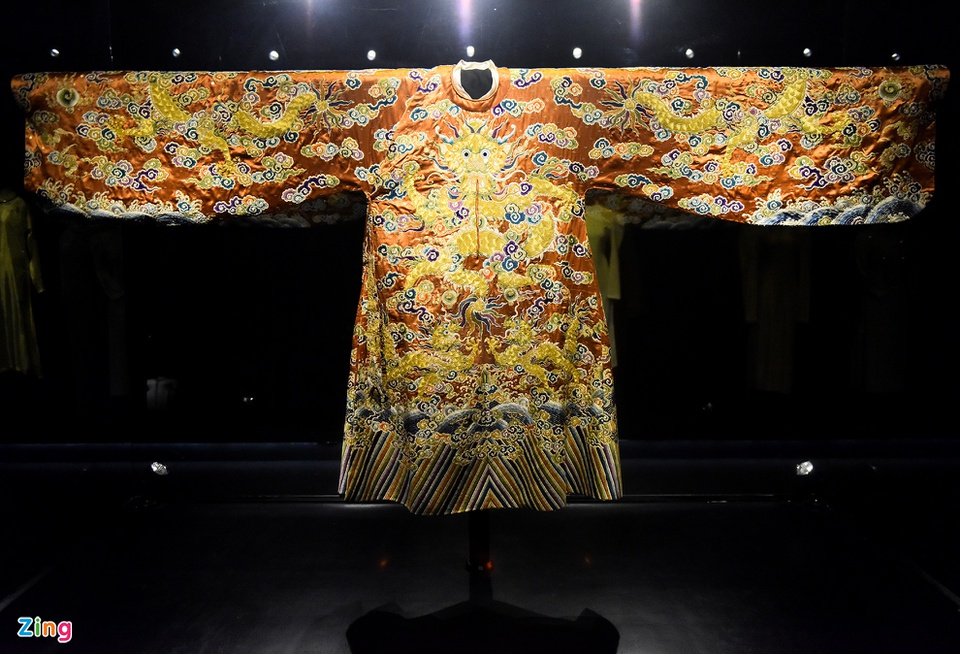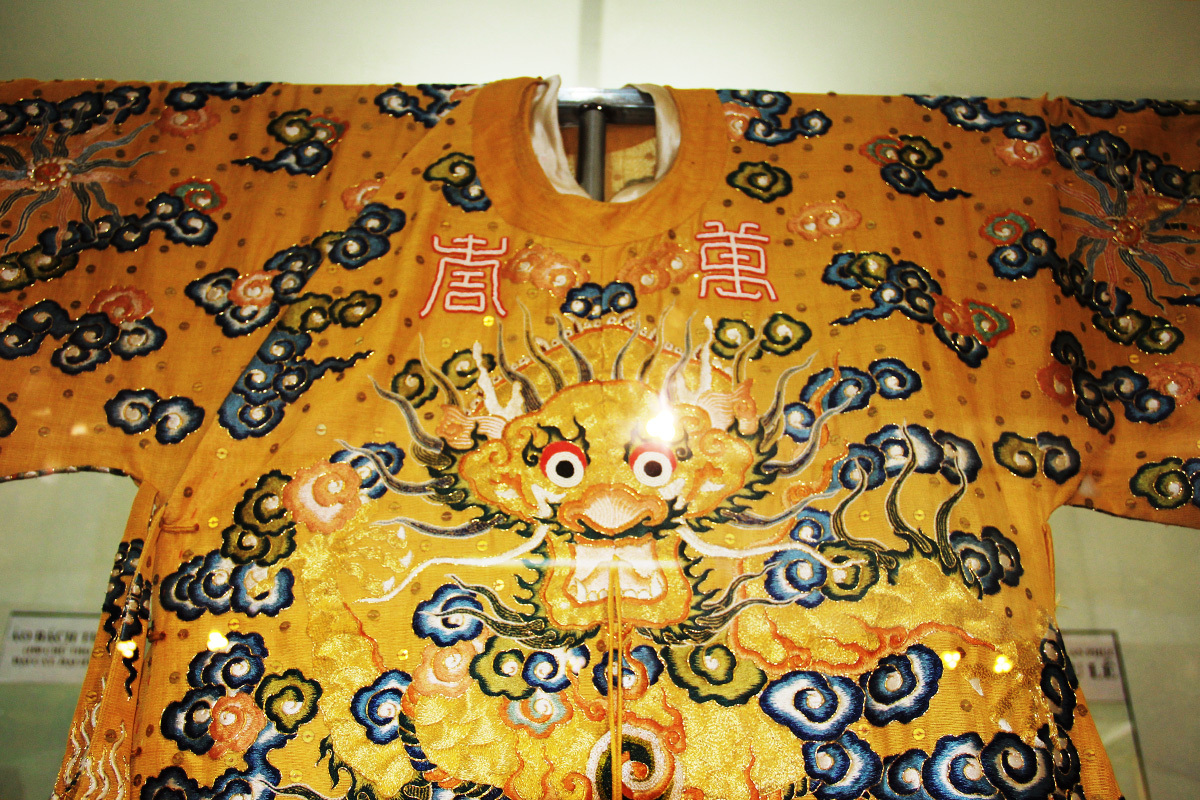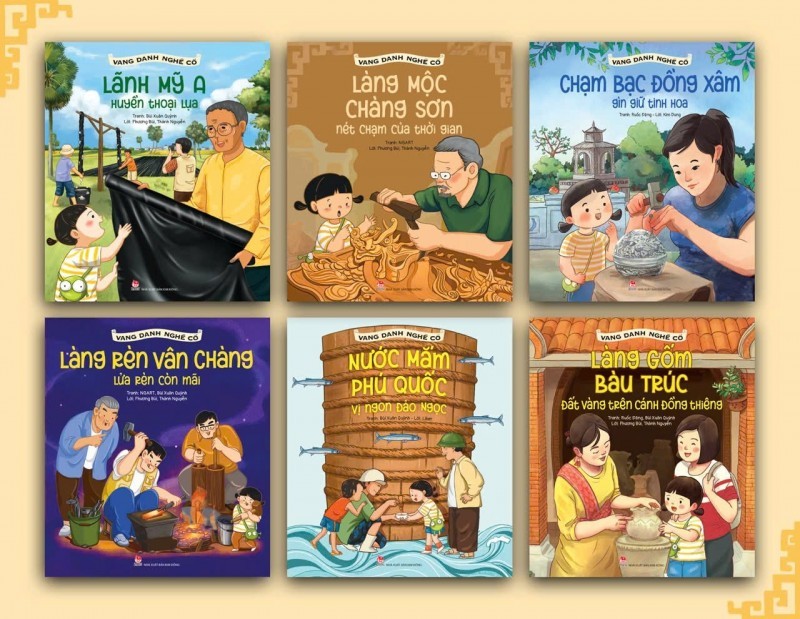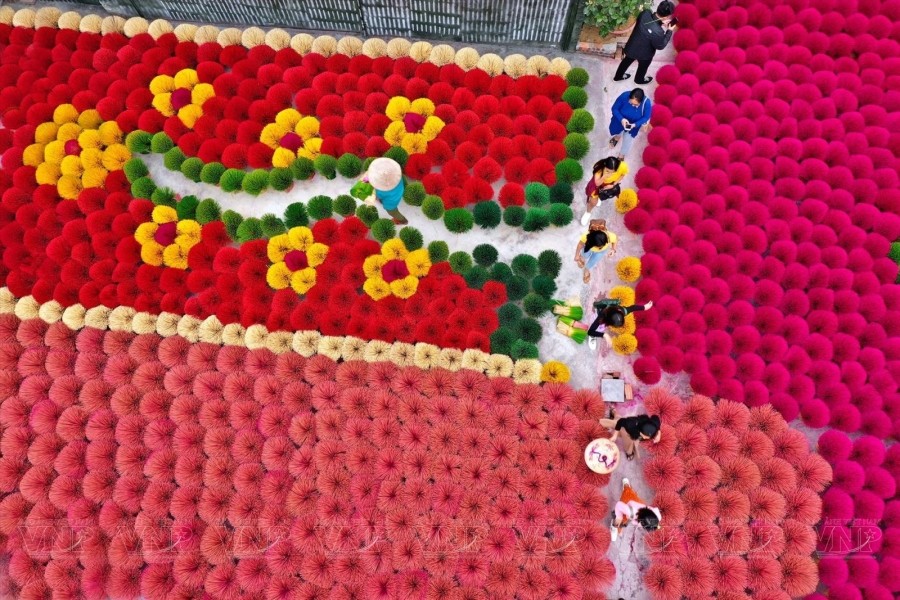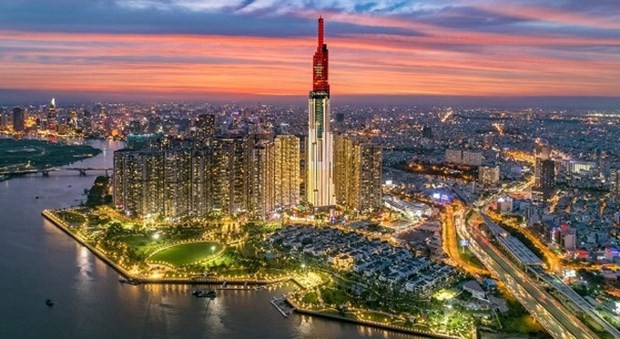Dong Cuu: an embroidery village responsible for 'dragon robes'
| Vietnamese Silk Embroidery Art impresses international media | |
| French artist uses Vietnamese paper and embroidery to heal the wound | |
| Exploring hand embroidery fabric of Thai women |
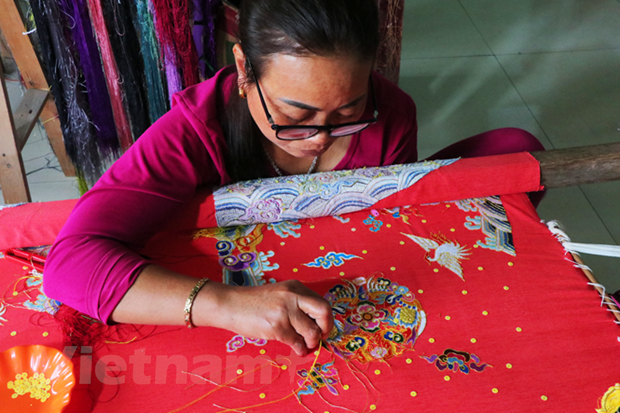 |
| Preserving and promoting the traditional craft of embroidery is the desire of many artisans in Dong Cuu village. Photo: Vietnamplus |
Hundred-year-old traditional craft
Dong Cuu embroidery village has preserved its ancient beauty with banyan trees and communal houses. Along the two sides of the entrance to the village, visitors can easily see couplets, canopies, umbrellas and ceremonial robes, Vietnamplus reported.
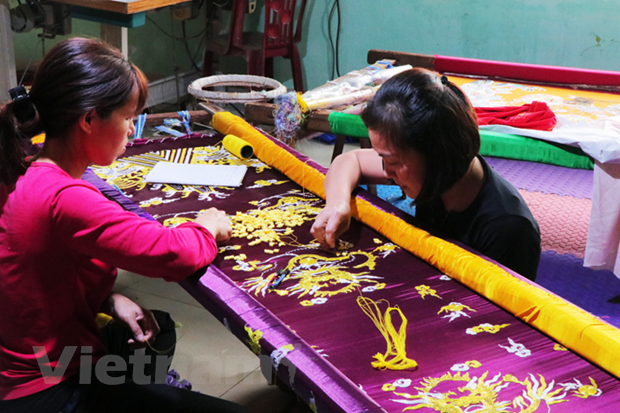 |
| Photo: Vietnamplus |
Dong Cuu village was formed in 1746, under the reign of King Le Canh Hung. It worships Le Cong Hanh, the ancestor of the embroidery industry. Legend has it that he learned the embroidery techniques when he went to a foreign country to work as an envoy. He then taught them to residents, including Dong Cuu villagers.
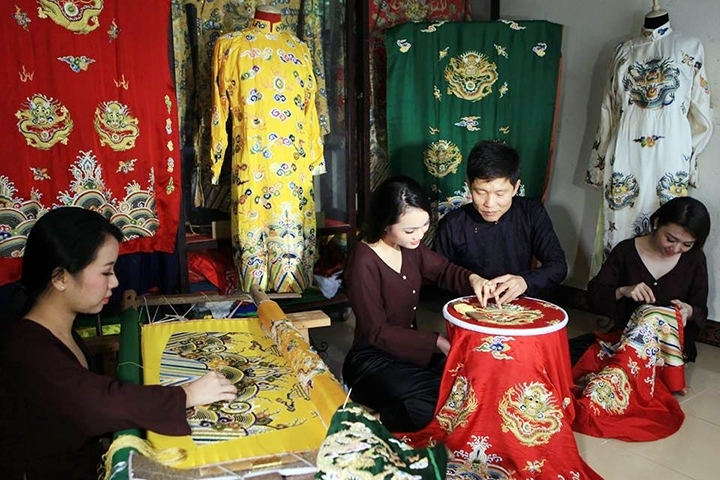 |
| Embroiderers in Dong Cuu village work on their products. Photo: Nhan Dan |
Embroidering royal costumes requires meticulousness and lots of effort. Tools for embroidery include needles, frames, scissors, rulers, markers, threads and fabrics. Nevertheless, to complete the restored dragon robes, embroiderers must seek suitable types of fabrics as well as master technical of coloring and interweaving the threads. The stitches must lie in a certain direction.
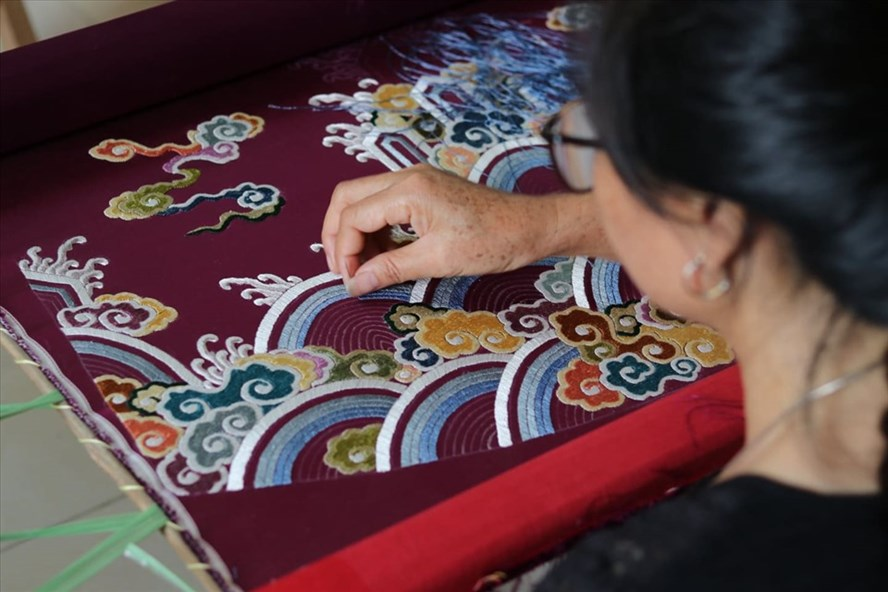 |
| Embroidering royal costumes requires meticulousness and lots of effort. Photo: Lao Dong |
“It takes several months, even one month to complete a robe. All processes are made by hand, so, they require thoroughness and patience. Robes for Kings are created differently from ones for Queens,” Mai, an embroiderer said, adding that many visitors from the South have come to the village to see with their own eyes the embroidery process.
Despite the appearance of machine-embroidered products in the market, hand-embroidered products of Dong Cuu village are still preferred by many customers. Products created by skillful hands always bring sophistication and high aesthetic values.
Making efforts to preserve the traditional craft
There are now more than 100 embroidery workshops in Dong Cuu village, with 10-20 workers each. The village offers a variety of products which are mainly sold in the Northern region. Embroidery brings a quite high income for residents, helping them to stabilize their life as well as preserving and promoting the traditional craft.
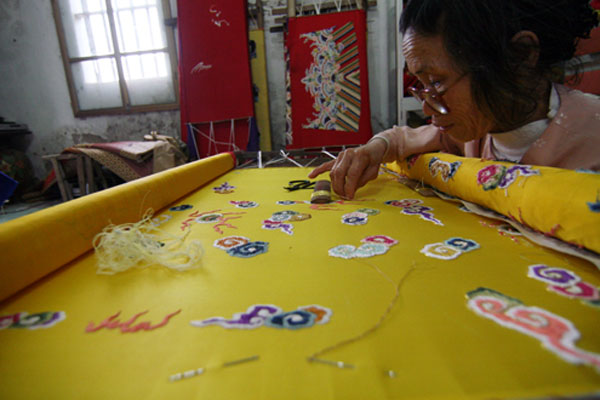 |
| In November 2016, the traditional craft of embroidery in Dong Cuu was recognized as a national intangible heritage by the Ministry of Culture, Sports and Tourism. Photo: Lao Dong |
To become a well-known embroidery village as it is today, Dong Cuu village has gone through a long process of establishing, creating its brand and inheriting the tradition. The village is home to skilled and enthusiastic artisans who are willing to pass down the job to youngster generations.
More and more youngsters in Dong Cuu village have followed the ancestors’ job which represents a good sign in the context that many traditional craft villages across the country are in danger of disappearing.
Nguyen The Du, Chairman of Dong Cuu Village Traditional Embroidery Association, said: “Products of the village are favored by many customers. Workers are well-paid. To maintain the craft, we have trained the young generation on how to embroider. They are really interested in the job.”
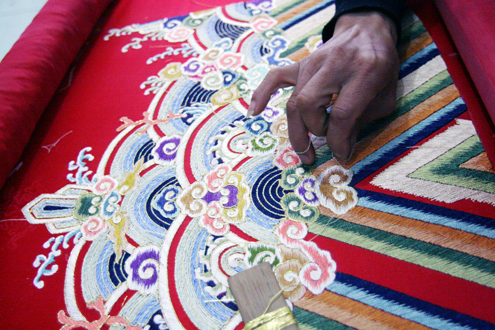 |
| Photo: Thegioidisan |
The meticulousness of experienced artisans and the creation of youngsters have produced diverse and unique items.
In November 2016, the traditional craft of embroidery in Dong Cuu was recognized as a national intangible heritage by the Ministry of Culture, Sports and Tourism. The recognition has created favorable conditions to facilitate the development of the craft in the village while encouraging villagers to retain their ancestors’ practice and promote the cultural essence of the craft.
More about dragon robe
Dragon robe was the daily dress of the Emperors or kings of Vietnam (Nguyen dynasty). Vu Van Gioi, an expert in the restoration of ancient clothing such as the dragon robe of the Nguyen Dynasty, said “the dragon robe weighs about 6kg, complete with up to 1kg of gold. The King’s shirt is adorned with gold leafing and real pearls and has about 6,000 beads.” He discovered many interesting things in the process of restoring the King’s dragon robe. For example, the dragon robe must have nine dragons; the dragon in the middle of the chest is the biggest dragon and is displayed at the front to signify power. A total of three dragons on the front, three on the back, one on the front flap and the last on the inside flap complete the nine dragon motifs.
Each robe must always contain sufficient elements of heaven and earth, and so it is embroidered with imagery related to the sky, sea and land. The fabric and materials used for sewing the King’s hat, shirt and shoes were often purchased abroad and were accentuated with gold, silver, pearls and diamonds to add more value and majesty. The dragon robe was dark yellow, and the body was embroidered with motifs such as dragons, the sun, the moon, stars and mountains. The flap was stitched with dragons, clouds, water and waves while the sleeves were finished with bats and dragon imagery. The fabric and stitching thread needed to be done in silk, with the color either shiny or easy to tarnish. Every societal class used a different kind of embroidery thread to sew the robe. The King’s robe was sky blue and yellow; the empress wore purple, red and pink whereas the price wore a garment of pure yellow. |
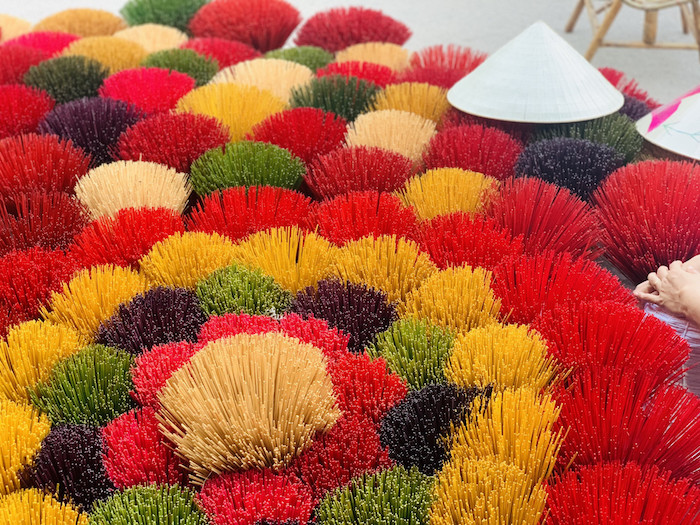 | Hue’s traditional craft villages turn colorful as Tet approaches Prior to the Lunar New Year annually, the craft villages in Hue turn colorful and are engulfed in the bustling and joyful ambiance as the ... |
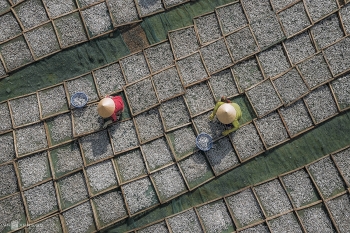 | Photos show the beauty of Vietnam's traditional craft villages The beauty of traditional craft villages across Vietnam was captured by HCMC-based photographer Cao Thi Ngoc Diem. |
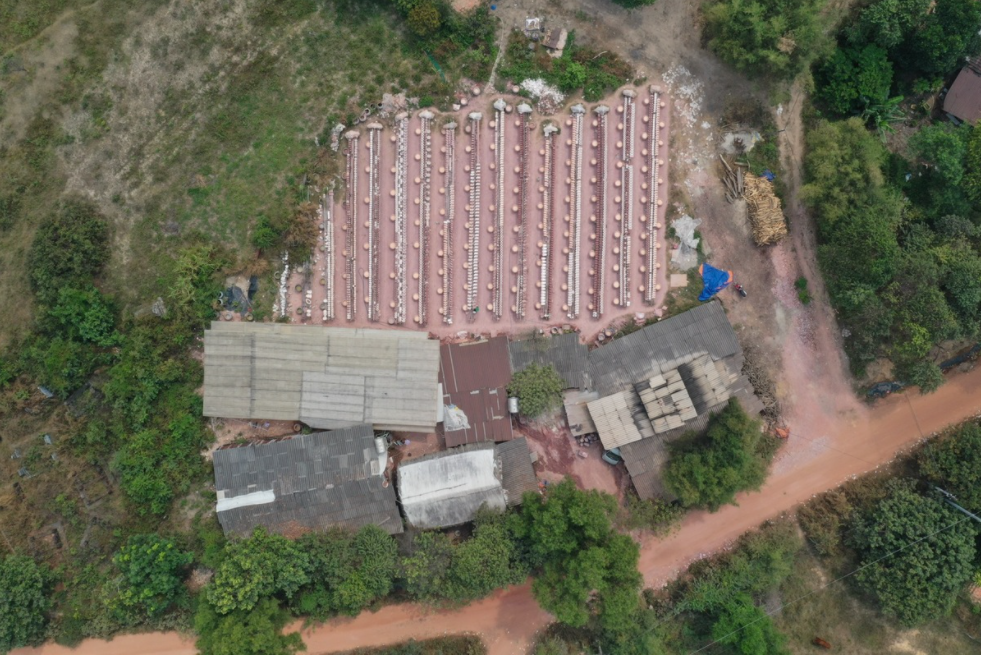 | Traditional pottery village busy preparing for Tet As the New year of Ox is coming, the kilns in Tan Uyen town are busy producing pottery buffaloes and traditional products. |
Recommended
 Handbook
Handbook
Vietnam Moves Up 8 Places In World Happiness Index
 Handbook
Handbook
Travelling Vietnam Through French Artist's Children Book
 Multimedia
Multimedia
Vietnamese Turmeric Fish among Best Asian Dishes: TasteAtlas
 Handbook
Handbook
From Lost to Found: German Tourist Thanks Vietnamese Police for Returning His Bag
Popular article
 Handbook
Handbook
Prediction and Resolution for the Disasters of Humanity
 Handbook
Handbook
16 French Films To Be Shown For Free During Tet Holiday In Vietnam
 Handbook
Handbook
Unique Cultural and Religious Activities to Welcome Year of the Snake
 Handbook
Handbook

